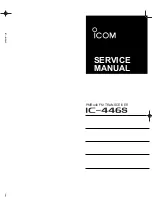
CC1000
SWRS048A Page 23 of 55
14. Frequency programming
RX mode:
f
LO
(low-side)
f
LO
(high-side)
f
RF
(Receive frequency)
f
IF
f
IF
TX mode:
f
RF
(Center frequency)
f
sep
f
0
(Lower FSK
frequency)
f
1
(Upper FSK
frequency)
f
vco
f
vco
Figure 15. Relation between f
vco
, f
if
, and LO frequency
The frequency synthesiser (PLL) is
controlled by the frequency word in the
configuration registers. There are two
frequency words,
A
and
B
, which can be
programmed to two different frequencies.
One of the frequency words can be used
for RX (local oscillator frequency) and the
other for TX (transmitting frequency,
f
0
).
This makes it possible to switch very fast
between RX mode and TX mode. They
can also be used for RX (or TX) on two
different channels. The MAIN.F_REG
control bit performs selection of frequency
word A or B.
The frequency word,
FREQ
, is 24 bits (3
bytes) located in
FREQ_2A:FREQ_1A:FREQ_0A
and
FREQ_2B:FREQ_1B:FREQ_0B
for the
A
and
B
word, respectively.
The frequency word
FREQ
can be
calculated from:
16384
8192
+
⋅
+
⋅
=
TXDATA
FSEP
FREQ
f
f
ref
VCO
,
where
TXDATA
is 0 or 1 in transmit mode
depending on the data bit to be
transmitted on DIO. In receive mode
TXDATA
is always 0.
The reference frequency
f
ref
is the crystal
oscillator clock divided by
PLL.REFDIV
, a
number between 2 and 14 that should be
chosen such that:
1.0 MHz
≤
f
ref
≤
2.46 MHz
Thus, the reference frequency
f
ref
is:
REFDIV
f
f
xosc
ref
=
f
VCO
is the Local Oscillator (LO) frequency
in receive mode, and the
f
0
frequency in
transmit mode (lower FSK frequency). The
LO frequency must be
f
RF
– f
IF
or
f
RF
+ f
IF
giving low-side or high side LO injection
respectively. Note that the data on DIO will
be inverted if high-side LO is used.
The upper FSK transmit frequency is
given by:
f
1
=
f
0
+
f
sep
,
where the frequency separation
f
sep
is set
by the 11 bit separation word
(
FSEP1:FSEP0
):
16384
FSEP
f
f
ref
sep
⋅
=
Clearing
PLL.ALARM_DISABLE
will
enable generation of the frequency alarm
bits
PLL.ALARM_H
and
PLL.ALARM_L
.
These bits indicate that the frequency
















































